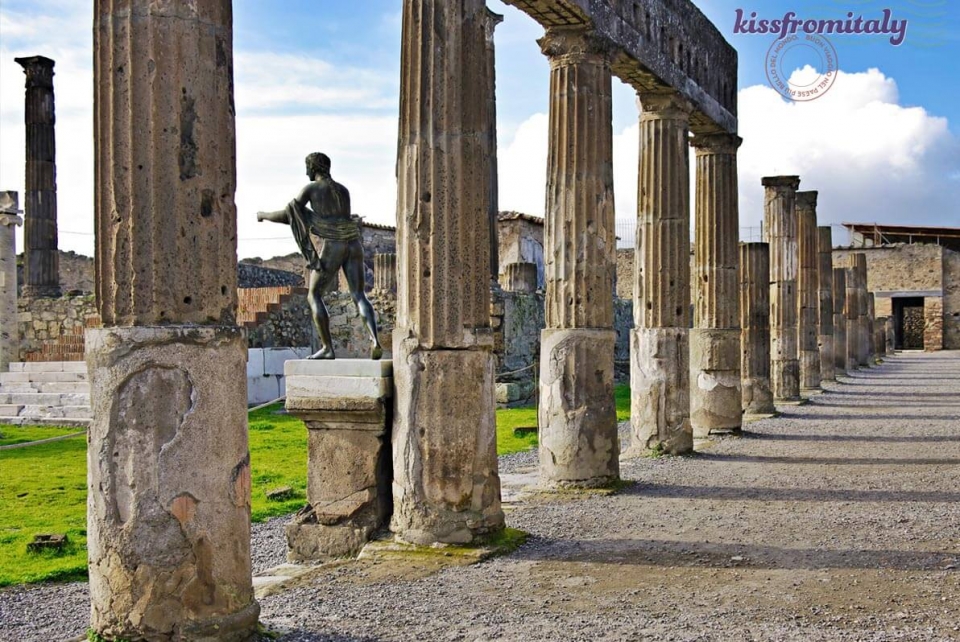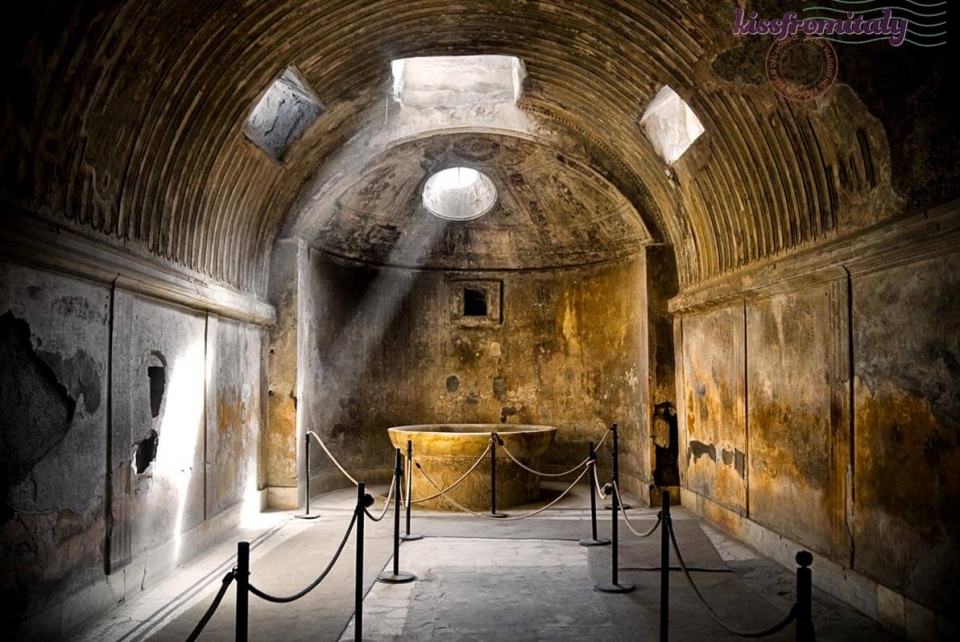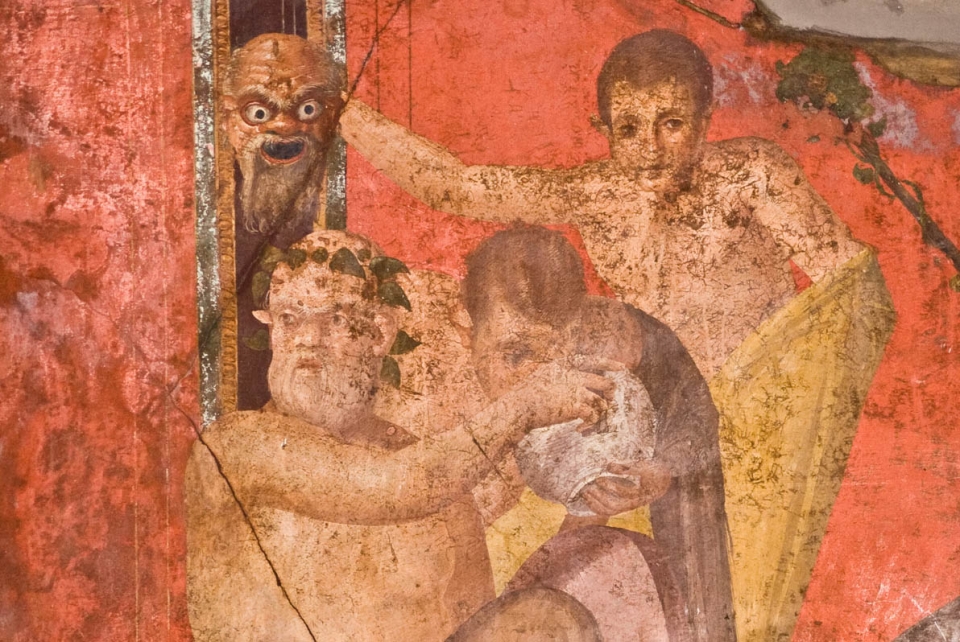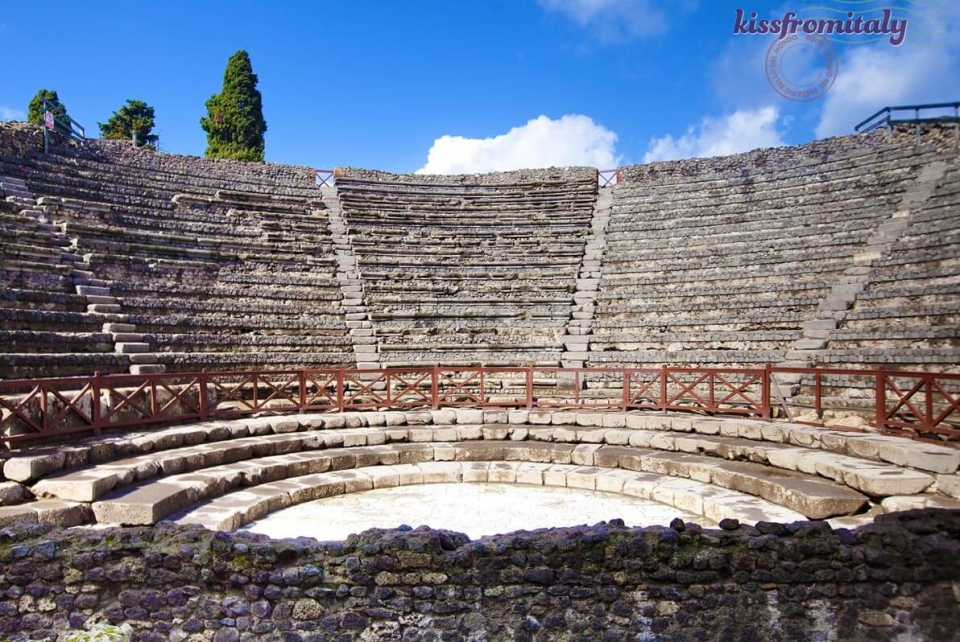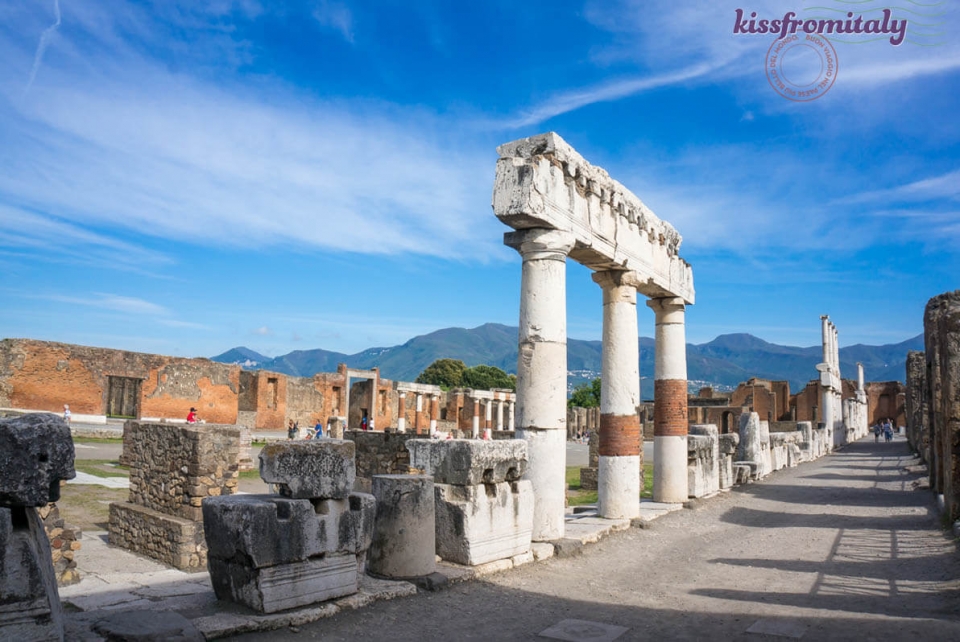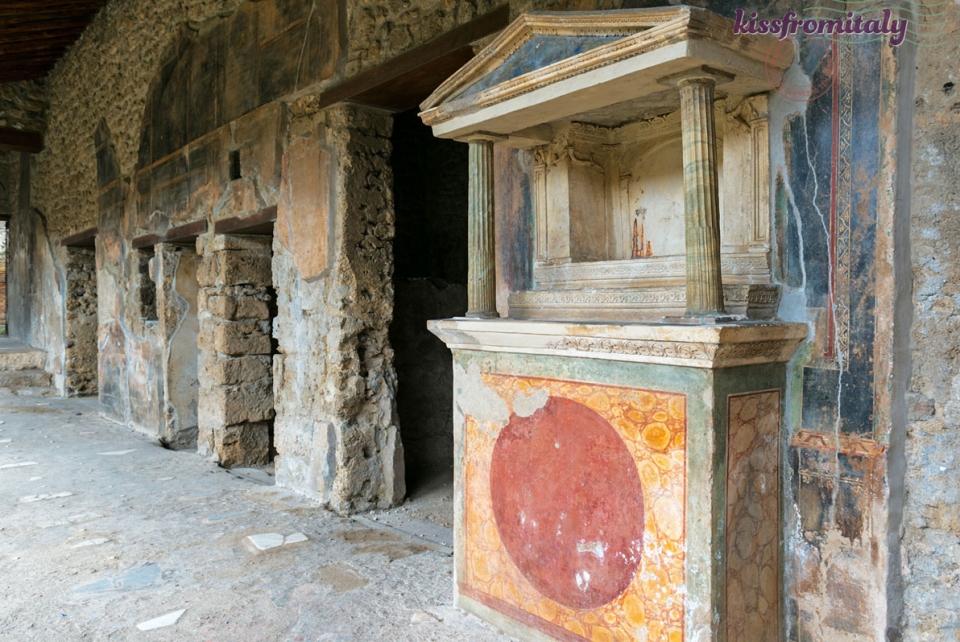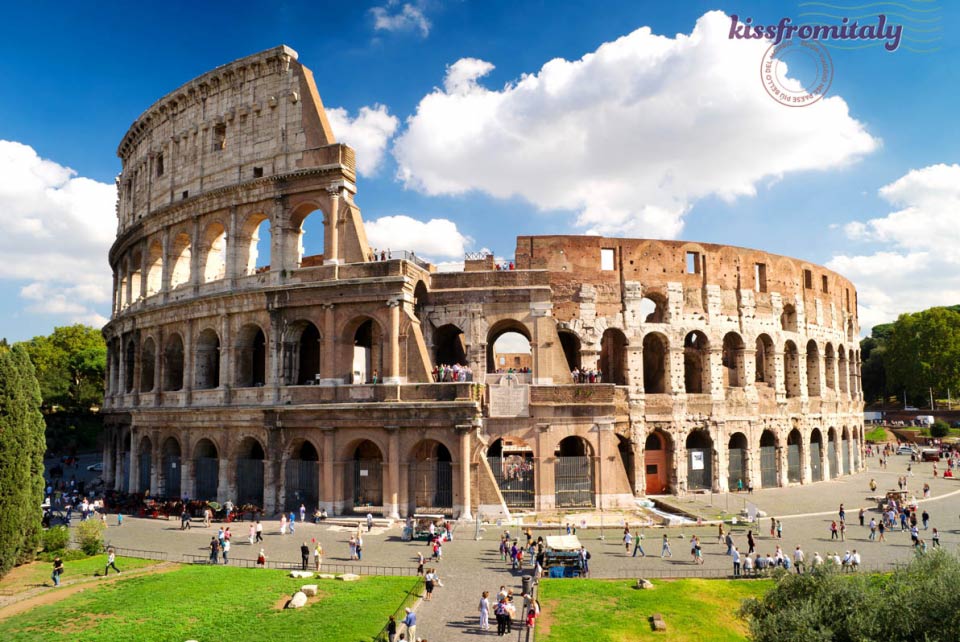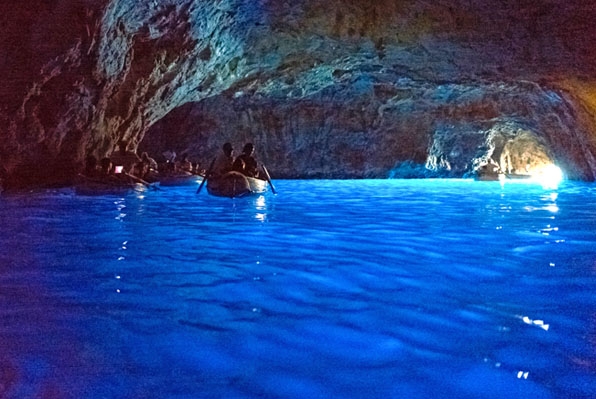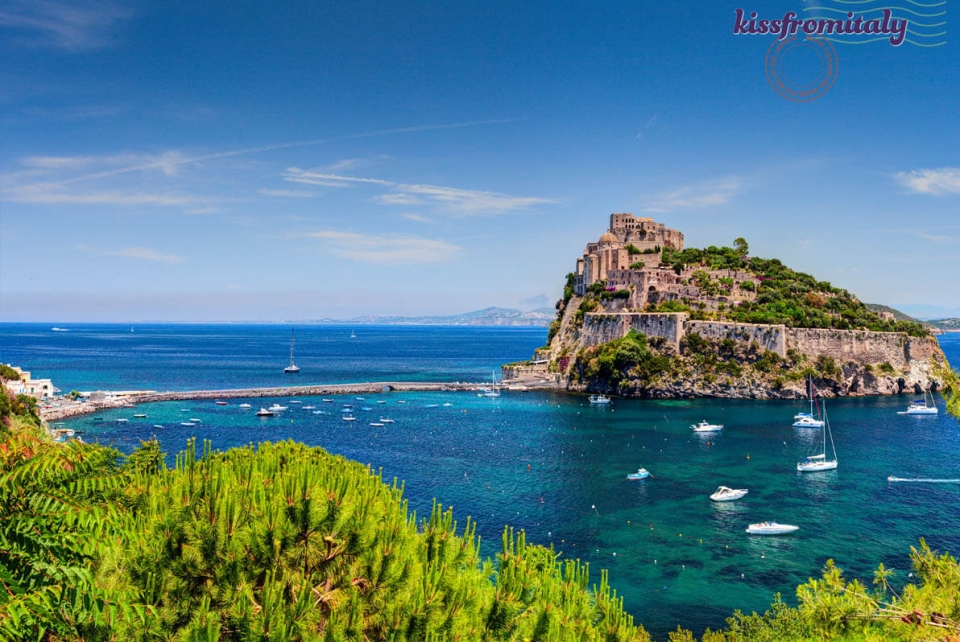
Everything you need to know about what to see in Pompeii, how to get there and how to visit the archaeological site!
The Ruins of Pompeii are an essential stop on any trip to Southern Italy, and with good reason. A few hours spent exploring the archaeological site of this ancient Roman city will leave you with an unforgettable glimpse into the distant past. The swift and sudden destruction of Pompeii turned it into a time capsule of ancient Roman life.
Where are the ruins of Pompeii
The ruins of the ancient Roman city of Pompeii are near Naples (Campania region) in the Southern part of Italy. The ruins are inside a vast archaeological park located in the small town of Pompeii which is part of the metropolitan area of Naples.
History of Pompeii
Two thousand years ago, on a late August afternoon, the people of Pompeii were going about their activities on a day like any other. The previous days’ early warning signs had been dismissed as unusual but harmless tremors and perhaps more-nervous-than-usual family dogs. The volcanic blast of flame, rocks and smoke on August 24th, 79 AD revealed that what they were not, in fact, living in the shadow of a mountain.
Pompeii was buried under 60 feet of ash and pumice. Most of the residents of Pompeii were able to escape to safety, but their city became a freeze frame of daily life, preserved under the ash for nearly 2,000 years until its rediscovery in the 1700s.
How to Get to Pompeii
The archaeological site of Pompeii can be reached in about 30-45 minutes from the center of Naples which is about two and half hour drive South of Rome.
FROM NAPLES - It's easy to get there by car or public transportation from the station, airport or hotel.
By Car - Pompeii is about 40 minutes drive from the center of Naples. Take the A3 Napoli Salerno highway going South and exit Pompeii Scavi
By Train - From Napoli Centrale or Sorrento train stations, take the Napoli-Sorrento Circumvesuviana line. The trains leave about every half hour, and after about a 30 minute ride, get off at "Pompeii Scavi ". For more details on the train's schedule see here for the Circumvesuviana and here for Trenitalia
By Bus - See here for SIta Sud
FROM ROME - Pompeii can be quickly and easily reached from Rome with the high speed train. It takes about one hour From Rome Termini to Naples Centrale station and then about one hour more to the archaeological site. Always better to book in advance here with Trenitalia
FROM THE AMALFI COAST - Pompeii is also very near the Amalfi coast so you can get there from Amalfi, Positano, Sorrento and other locations on the coast in less than one hour drive.
Tickets and Opening Hours
Tickets to Pompeii cost € 15 each each adult and are valid for one day, free entrance if you are less than 18 years old. A map of the ruins and a small pocket guide are included with your ticket. There is an optional audio guide for € 6.50, which is a recording of the pocket guide available in a few different languages. Free entrance every first Sunday of the month.
Pompeii is open every day (except January 1st, May 1st, and December 25th), for the following hours:
1 November - 31 March: 9:00am - 5:00pm with last entrance at 3:30pm
1 April - 31 October: 9:00am - 7:30pm with last entrance at 6:00pm
For more information on tickets and entrance to Pompeii see Official website of Pompeii archaeological site
Guided tours of Pompeii
The Pompeii Archaeological site is very large and complex, after all these are the ruins of an entire town! Since it's easy to get lost and waste lots of time wandering around this huge area, we suggest to book a guided tour so that you see all the most important sites and enrich your visit with a deeper understaning of the art, history and architecture around you.
While waiting in line to buy your tickets, you’ll notice lots of people trying to sell you a guided tour. Prices depend on the season and how busy the day is, and the quality and length of the tour can vary widely from guide to guide. If you want to be sure of having a great guide you can use one of the many options offered by KissFromItaly, see here for more information on private tours.
Gallery
Entrance Into Pompeii
There are three official entrances - Porta Marina, Piazza Esedra, and Piazza Anfiteatro. Porta Marina is considered the main entrance to Pompeii since in addition to the ticket booth it also has an information point, bookshop, and audioguide rentals. Both the Porta Marina and Piazza Anfiteatro entrances have a free luggage drop off, so feel free to leave any heavy bags to explore the ruins more comfortably!
What to see in Pompeii
Thermal Baths
There are three thermal baths in Pompeii: the Stabian Baths, Central Baths, and Forum Baths. The Forum Baths, the smallest but perhaps most elegant of the three, was Built in 80 BC. They have a dressing room, hot, warm, and cold rooms, an exercise field, and toilets. At the time of Mt. Vesuvius’ eruption it was the only functioning bath, the others having been damaged in the earthquake of 62 AD.
Temple of Isis
The Temple of Isis is one of the best preserved buildings in Pompeii, partly because it had recently been restored following the earthquake of 62 AD. This Roman temple to the Egyptian God Isis was among the first discoveries during Pompeii’s excavation in 1764. Isis was a compassionate goddess, and this temple is thought to have been frequented by women, freedmen, and slaves.
Amphitheater
The construction of Pompeii’s amphitheater began in 80 BC, making it the oldest known example of a Roman Amphitheater made with stone. The next oldest is the Colosseum in Rome, constructed more than a century later. The Amphitheater of Pompeii may have served as a model for such future amphitheaters, and in it’s day hosted everything from circus shows to gladiator games.
Forum
The Forum of Pompeii was originally situated at the juncture of old routes that connected Pompeii to other important cities, such as Naples. It was the heart of the community, where citizens gathered for religious, social, and economic purposes. Surrounding the Forum are the temples of Jupiter and Apollo, the Basilica, and other important buildings such as the food and grain markets.
Lupanare Brothel
Pompeii was a busy port town and had many brothels. The Lupanare Brother, or "wolves’ den," is the largest and most richly-decorated of them all; probably the only one built specifically to be a brothel. Of the two floors, the upper floor has a separate entrance and is more elaborately decorated. It was most likely reserved for wealthier patrons.
The famous wall paintings depicting various sex positions are some of the few examples of erotic art left at the Archaelogical site of Pompeii. Many were taken away to private collections in the years following Pompeii’s discovery and excavation, or they were hidden away for the sake of decency, now on display at the Archaeological Museum of Naples.
Plaster Casts of Victims
In a courtyard near the Forum are glass cases showing the plaster casts of a few of Mt. Vesuvius' victims. When archaeologists were excavating the city, they noticed that the human remains they were uncovering were surrounded by empty spaces. By carefully pouring in liquid plaster, they were able to capture the final poses of the last citizens of Pompeii left in the city as it was buried in ash. It's a sight you definitely won't forget!
Finally is worth mentioning that the ruis of Pompeii are a UNESCO world heritage site. This is a must-see that’s sure to be a highlight of your trip and a story to tell for years to come! For advice about how to visit Pompeii or questions about Pompeii tours, feel free to give us a call or email us!




